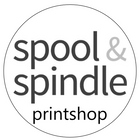Delighted with Double Gauze
What is Double Gauze?
Double Gauze is a light, airy fabric that is made up of two layers of gauze (lightweight plainweave fabric that is loosely woven). These two layers are attached to each other ever few inches with a small stitch (generally this is not visible from the outside, but if you gently pull the two layers apart, you can see them). The most common types of Double Gauze are cotton, or linen, or a combination of the two.
When washed, Double Gauze plumps up and shrinks in width and length. It has a wonderful deep textural quality. However, due to the shrinkage, we definitely recommend prewashing. You can iron it flat again if you wish; but we prefer the texture! Giving it a light steam before sewing will help relax the wrinkles without losing the textural beauty.
Is it difficult to sew?
Double Gauze is a lightweight, delicate fabric. The loosely woven threads do snag fairly easily, so using nice sharp pins, and a new sewing needle is recommended. You can use any foot that you would normally use for a woven, but a walking foot will make the fabric handling much easier, and it will help stop any pulling of the fabric.
Because it is two layers of loosely woven fabric, Double Gauze can pull the bias very easily. It's important to stay stitch necklines and armholes so they don't get pulled out of shape before you sew them. As well, seams that run on the bias (such as raglan sleeves) will need extra reinforcing, or will need to be sewing with a stretchier stitch.
Double Gauze, due to being a loose weave, can also unravel fairly easily. It's best to run a line of zig zag stitch along the raw edges of your fabric before prewashing (or serge them). Seams need to be well-finished to prevent fraying during wear and washing. Serging, french seams, or bias binding are all great methods for finishing double gauze.
What can I make out of it?
Traditionally we've seen lots of baby blankets and kid's wear made from Double Gauze, as well as lightweight, airy summer skirts. It's extremely soft and gentle-feeling, and breathes fantastically, so it's wonderful for hot weather wear. More recently, it's become quite popular for blouses due to it's rustic, textural look and soft colours. It shines in less-structured, oversized, or floaty garments. It's not well suited to garments with lots of seams, or that are very structural, as it doesn't tend to hold its shape.

